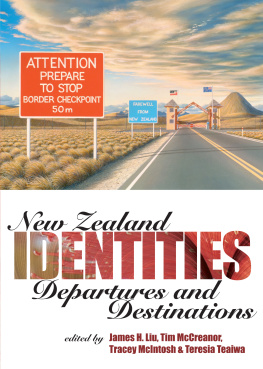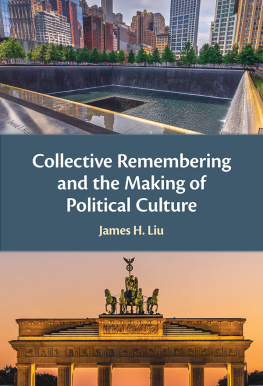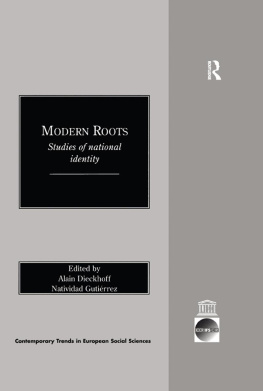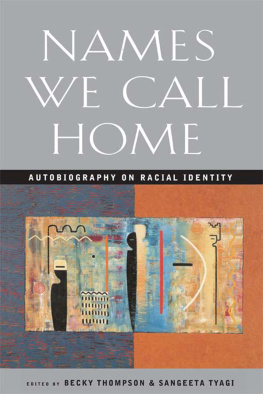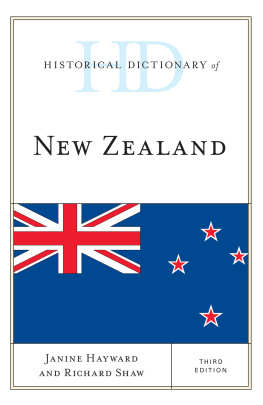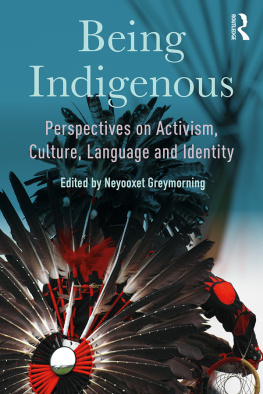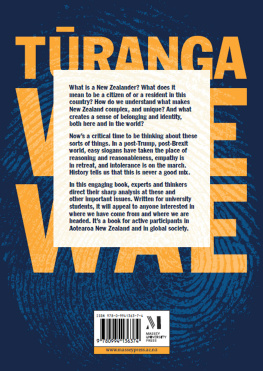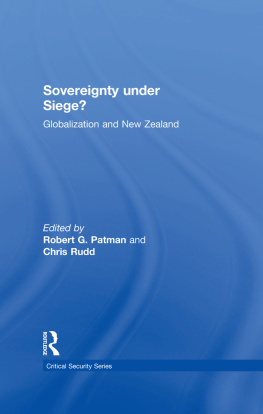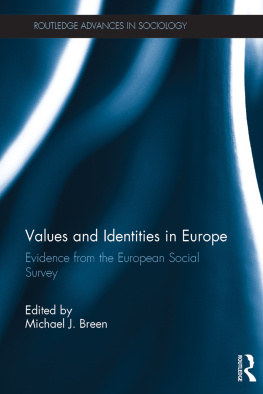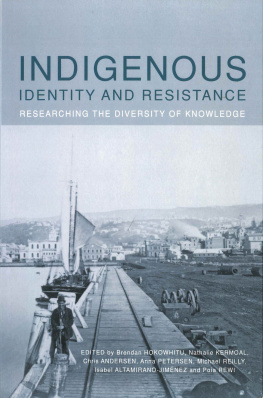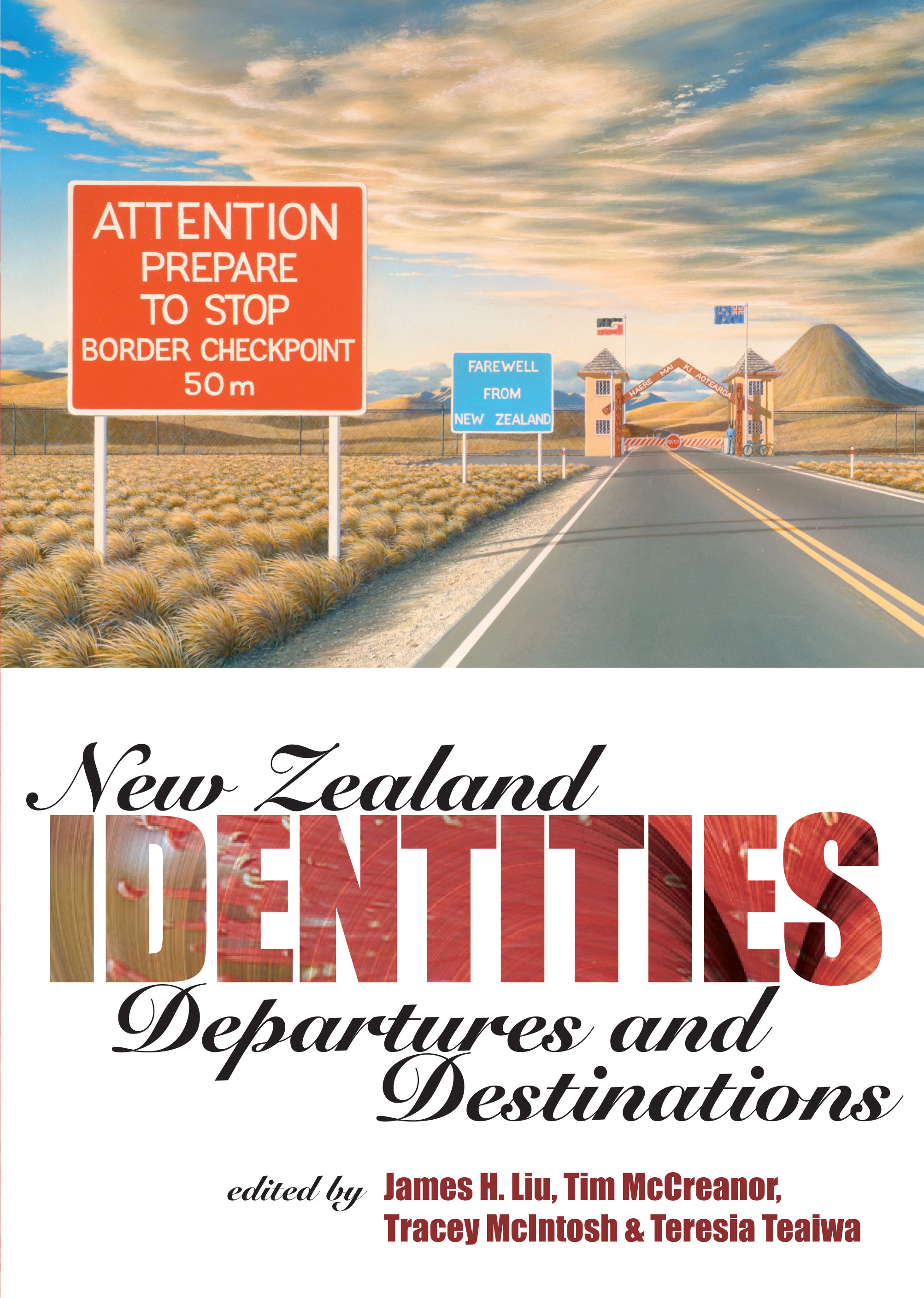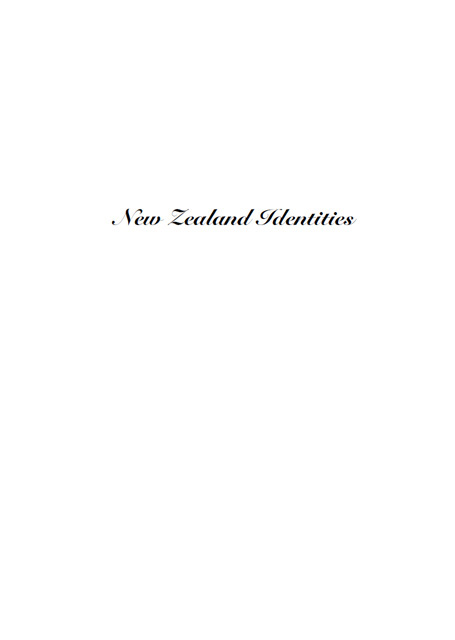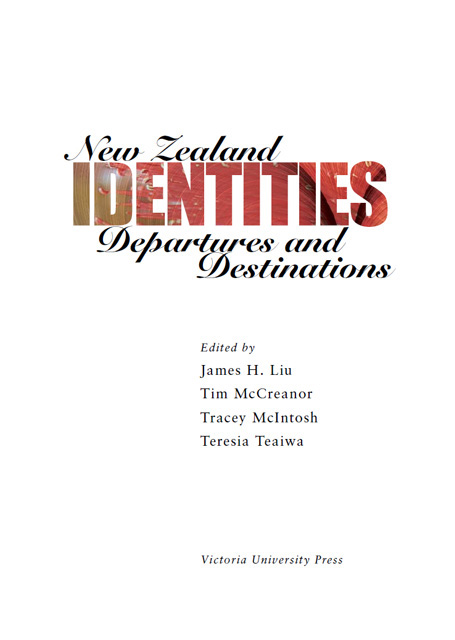VICTORIA UNIVERSITY PRESS
Victoria University of Wellington
PO Box 600 Wellington
http://www.vuw.ac.nz/vup
ISBN 9780864735171 (print)
ISBN 9781776560004 (EPUB)
ISBN 9780864739995 (kindle)
Copyright editors and contributors 2005
First published 2005
This book is copyright. Apart from any fair dealing for the purpose of private study, research, criticism or review, as permitted under the Copyright Act, no part may be reproduced by any process without the permission of the publishers
National Library of New Zealand Cataloguing-in-Publication Data
New Zealand identities : departures and destinations / edited by James H. Liu [et al.] ; Centre for Applied Cross-Cultural Research.
Includes bibliographical references and index.
ISBN 9781776560004
1. EthnicityNew Zealand. 2. National characteristics, New Zealand. I. Liu, James H. (James Hou-fu) II. Victoria University of Wellington.
Centre for Applied Cross-Cultural Research.
305.800993dc 22
Cover painting: Bicultural Terminus, Mark McLeod
Back cover image: Jen McBride
Ebook conversion 2014 by meBooks
Preface: The Spirit of Waikanae
The Centre for Applied Cross Cultural Research (CACR) was launched at Victoria University of Wellington in November 2003 as a multi-disciplinary centre for social science research, consultancy and training on domestic and international issues involving culture. While based in Wellington, the CACR has associates that hail from other parts of New Zealand and international associates from around the world. Part of the vision of the CACR is to engage academic researchers, government agencies and community organisations in a mutually productive dialogue around issues of culture, with the hope of building a more inclusive society that understands and manages its diversity better.
This book is the product of almost two years of work and planning. It emerged out of concerns about the directions New Zealand is heading, and a desire by social scientists to pool their knowledge and offer fresh insights into perennial issues facing this society. The seeds of this book were planted in conversations that New Zealanders have at the dinner table and in front of the evening news, questions about the ownership of the seabed and foreshore, the ethnic makeup of the All Blacks, the place of the Treaty of Waitangi and the flow of immigration into this country.
The goal of this book was to generate dialogue among social scientists from different disciplines that would take this conversation to a new level of meaning. We wanted to address contemporary issues, but beyond sound bites and through accessible and in-depth analysis. Such a conversation does not take form without a good deal of direction. So the formation of an editorial team was essential to the quality of the conversation that followed.
The editors of this book come from diverse ethnic and disciplinary backgrounds. Perhaps by coincidence, perhaps by design we are a rainbow coalition representing the four major blocks of peoples that populate this country: Pakeha and Maori, Pacific Nations and Asian. We are located in psychology, sociology and cultural studies. We have learned to listen to one another and trust each others instincts. We have discovered that each of us represents a source of knowledge that is sometimes not fully comprehensible to the other, but even so is always capable of giving insight.
Together, we sent out a call for papers in May 2004 to associates of the CACR. This attracted 20 submissions. Among these, 17 were presented at a weekend workshop in Waikanae from 19-21 November 2004. During the weekend, most of the attendees stayed at El Rancho Holiday Camp where they lived, breathed and ate New Zealand identities for three days. One memorable day began at 8:00 am and ended at 8:00 pm. In every session, more time was allocated to discussion than to presentation. For the most part, the delegates presented ideas in progress rather than finished presentations. We used the process of dialogue to refine these ideas into strange reflections of one another, where nothing in the written chapters explicitly referred to this process of conversation, but everything reflected a deep engagement with persons from other disciplines and cultural backgrounds. The flow of ideas at Waikanae, reflecting their sourcing in so many different intellectual traditions, was precious to the authors. A powerful quality of listening emerged from the proceedings, coupled with a subtle resonance of ideas.
In addition to the fifteen chapters that took written form here, we would also like to acknowledge the work of Meegan Hall, Peter Adds and Mark Allen, who presented a paper on archaeology and identity in New Zealand, and Brad Jackson, who presented a paper on big business villains and small business heroes. Regretfully, these authors were unable to turn their presentations into chapters. We are deeply appreciative of their contributions to the weekend, and aware that something is missing from the spirit of Waikanae in their lack here.
Besides the authors, Sue Hanrahan, Manager of the CACR, made her presence felt not only in conversation but also in the impeccable arrangements for the weekend. Michelle Gezenstvey and Steve Kirkwood, post-graduate students at the School of Psychology at Victoria University, contributed not only through their presence but also by taking notes for the presentations. Their contributions were indispensable and very much a part of the fabric of the book you see here. We would like to thank our campground hosts at El Rancho, who provided an atmosphere of fellowship that permeated our dialogues.
After the weekend, authors had three to four months to submit chapters, which were reviewed by the members of the editorial team and nominated external reviewers. Each chapter was revised following review. The four editors wrote an introductory frame for the rich tapestry that emerged, and Joris de Bres, the Race Relations Conciliator for New Zealand, was invited to write an Afterword.
We would like to acknowledge the external reviewers for the chapters: Roderic Alley, Judy Brown, Fiona Cram, Peter Gibbons, Cluny Macpherson, Steve Matthewman, Philip Morrison, Douglas Pratt, James Ritchie, Linda Tuhiwai Smith, Paul Spoonley, Samson Tse and Graham Vaughan. Serving as an external reviewer is one of the unsung contributions of academic life, without which the quality of our work would be gravely reduced. Thanks very much for being part of this effort.
Last but not least, we are grateful to Mark McLeod and Jen McBride for contributing their artistic talents to this ensemble of work visioning New Zealand.
In some ways, what you hold in your hands today is an academic town hall. It is a collection of voices speaking to one another and not past one another, asserting their disciplinary knowledge but respectful of differences with others. While each of us had specific wishes for this volume, our sincere hope as a collective is that the spirit of dialogue at Waikanae, that manifested itself as a willingness to listen, a desire to engage, a generosity of commitment and a respectfulness of difference, may spread in ever-widening circles and contribute to a vision of strength in diversity for Aotearoa/New Zealand.
James H. Liu

